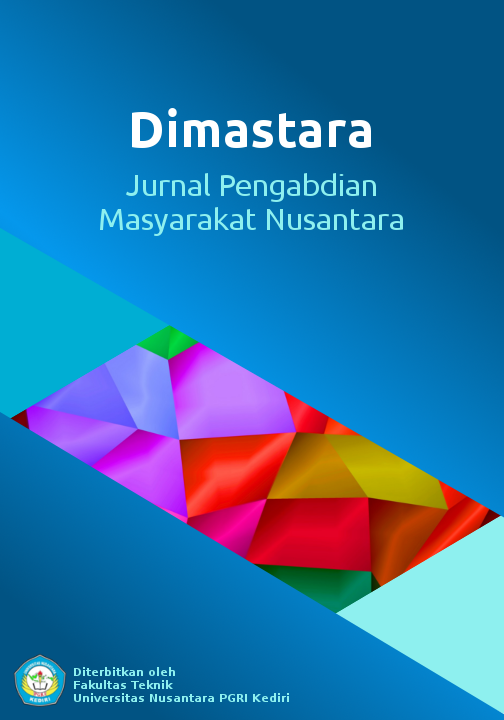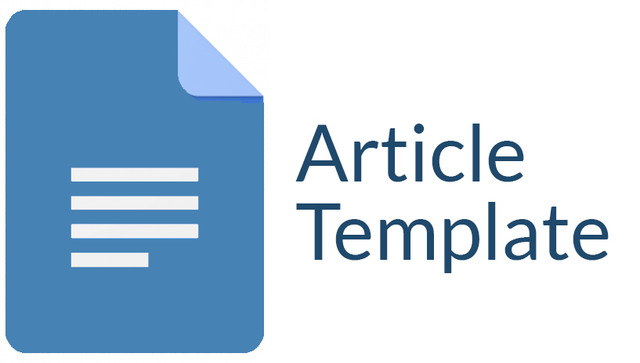Pemanfaatan Limbah Kotoran Dan Urine Sapi Perah Sebagai Penghasil Energi Alternatif Dan Pupuk Organik
DOI:
https://doi.org/10.29407/dimastara.v2i1.19016Keywords:
biogas berbiaya rendah, digester balon, pupuk organik, limbah kotoran sapiAbstract
Kaligondo Village is an area that is a center for Small and Medium Enterprises (SMEs) engaged in the dairy farming sector in Genteng District, Banyuwangi. Where many people work as dairy farmers starting in 2001. The increasing need for fresh milk in the Banyuwangi area and the partnership between dairy farmers in Kaligondo Village and the national dairy company "Nestle" since 2012 has formed the Sumber Lumintu Livestock Farmers Group with 15 members. There are 32 female breeders with FH (Friesian Holstein) dairy cows that can produce ±400 liters of fresh milk per day. The waste generated is ± 800 kg per day. Manure waste management is generally only piled up and left alone in the yard or placed in dug holes so that the yard or cowshed looks dirty, spreads unpleasant odors, and can be a source of disease to the surrounding environment. Through this service activity, the implementing team implemented the use of cow dung to produce low-cost biogas using balloon digester. The utilization of cow dung waste shows a large enough potential for the availability of biogas to help empower the Sumber Lumintu Livestock Farmer Group, especially the need for fuel so that the financial savings made can be allocated for other economic interests. Slurry biogas can also be used as an organic fertilizer to replace chemical fertilizers
Downloads
References
[2] Mukhlisoh, N. A., Lesmana, I. P. D., & Hartadiama, D. R.. “Produksi Low Cost-Biogas Skala Kecil Pada Kelompok Tani Ternak Desa Kemuning Lor Kecamatan Arjasa, Jember, Jawa Timur”. Pengabdian Masyarakat: Polije Proceedings Series, 141-144. 2020.
[3] Obileke, K., Mamphweli, S., Meyer, E. L., Makaka, G., & Nwokolo, N. “Design and Fabrication of a Plastic Biogas Digester for the Production of Biogas from Cow Dung”. Journal of Engineering, 2020.
[4] Garfí, M., Castro, L., Montero, N., Escalante, H., & Ferrer, I. “Evaluating environmental benefits of low-cost biogas digesters in small-scale farms in Colombia: A life cycle assessment”. Bioresource technology, 274, 541-548. 2019.
[5] Nadliriyah, N., & Triwikantoro, T. “Pemurnian Produk Biogas dengan Metode Absorbsi Menggunakan Larutan Ca (OH) 2”. Jurnal Sains dan Seni ITS, 3(2), B107-B111. 2014.
[6] Montebello, A. M., Fernández, M., Almenglo, F., Ramírez, M., Cantero, D., Baeza, M., & Gabriel, D. ‘Simultaneous methylmercaptan and hydrogen sulfide removal in the desulfurization of biogas in aerobic and anoxic biotrickling filters’. Chemical Engineering Journal, 200, 237-246. 2012.
[7] Hertamawati, I. R. T., Destarianto, P., Mukhlisoh, N. A., S ST, M. T., & Lesmana, I. P. D. Pengelolaan dan Pemanfaatan Bio-Slurry. Absolute Media, 2020.
[8] Deublein, D., & Steinhauser, A.. Biogas from waste and renewable resources: an introduction. John Wiley & Sons, 2011.
[9] Hanif, A. Studi pemanfaatan biogas sebagai pembangkit listrik 10 KW kelompok tani Mekarsari Desa Dander Bojonegoro menuju desa mandiri energi. Skripsi. ITS, Surabaya, 2010.
[10] Dinas Peternakan Banyuwangi. Potensi Peternakan di Banyuwangi. Diakses dari http://disnak.banyuwangikab.go.id/page/news/potensi-peternakan-di-banyuwangi, 2022.
Downloads
Published
Issue
Section
License
Penulis yang menerbitkan jurnal ini menyetujui persyaratan berikut:
- Hak cipta atas artikel apa pun dipegang oleh penulisnya.
- Penulis memberikan jurnal, hak publikasi pertama dengan karya yang dilisensikan secara bersamaan di bawah Lisensi Atribusi Creative Commons yang memungkinkan orang lain untuk membagikan karya dengan pengakuan atas kepenulisan dan publikasi awal karya tersebut dalam jurnal ini.
- Penulis dapat membuat pengaturan kontrak tambahan yang terpisah untuk distribusi non-eksklusif dari versi jurnal yang diterbitkan dari karya tersebut (misalnya, mempostingnya ke repositori institusional atau menerbitkannya dalam sebuah buku), dengan pengakuan dari publikasi awalnya di jurnal ini.
- Penulis diizinkan dan didorong untuk memposting karya mereka secara online (misalnya, di repositori institusional atau di situs web mereka) sebelum dan selama proses pengiriman, karena hal itu dapat mengarah pada pertukaran yang produktif, serta kutipan yang lebih awal dan lebih besar dari karya yang diterbitkan.
- Artikel dan materi terkait yang diterbitkan didistribusikan di bawah Lisensi Internasional Creative Commons Attribution-ShareAlike 4.0













